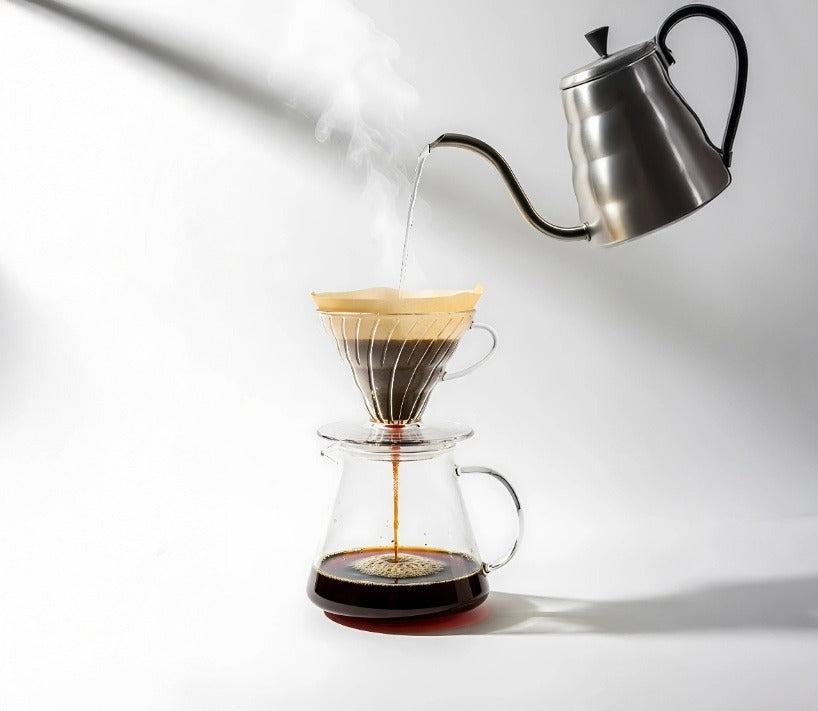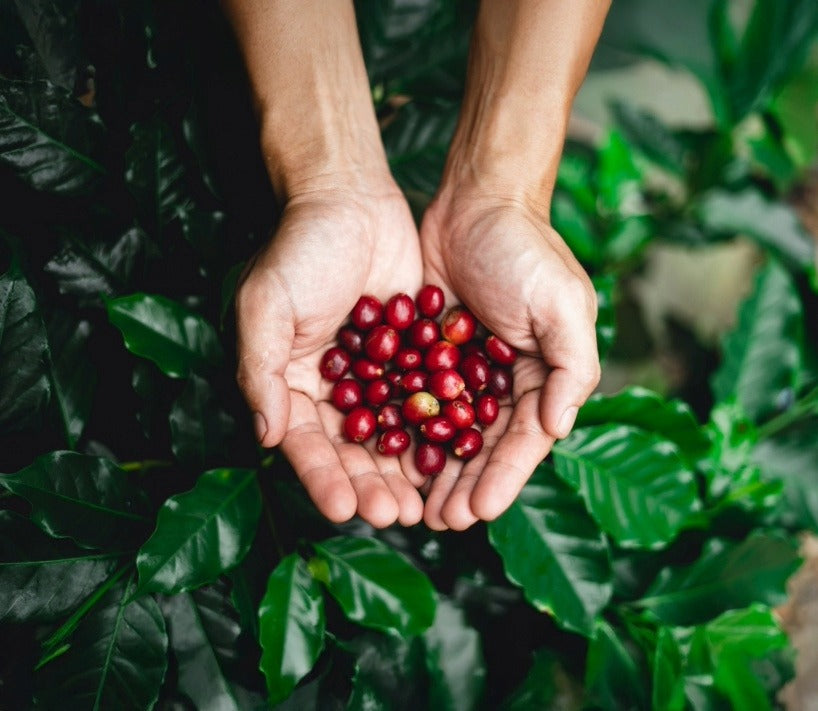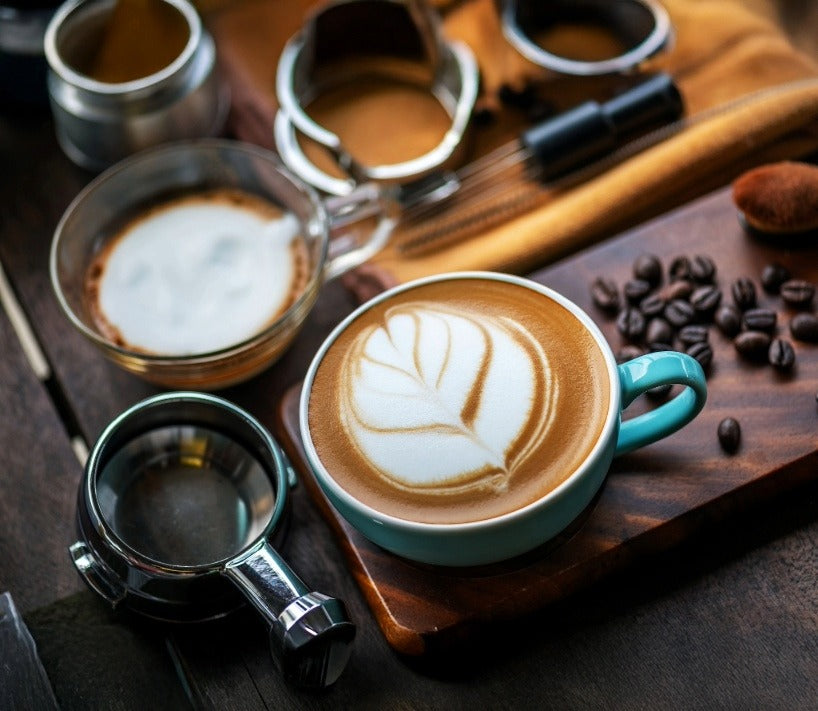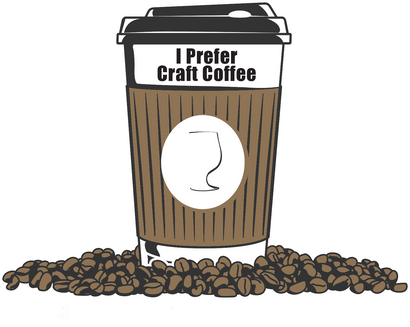Top Specialty Coffee Online: The Three Tiers of the Coffee Universe Explained
August 01, 2025 5 min read
Top Specialty Coffee Online: The Three Tiers of the Coffee Universe Explained (Without the Snobbery)
Top Specialty Coffee Online — Why Knowing Your Tier Matters
Ever taken a sip of coffee so bland you wondered if someone secretly filtered it through an old gym sock? Contrast that with a cup so flavorful it made you quietly whisper, “Oh wow… I taste strawberries wearing tuxedos.” If you’d like more tuxedo-berries and fewer gym socks in your mug, stick around. By the end of this read you’ll be able to spot the three major tiers of the coffee industry at a glance, choose the one that fits your taste (and wallet), and brag to your friends about top specialty coffee online without sounding like “that” person at the party.
A (Mostly) True Tale of Three Coffees
Picture our hero, Caffeinated Carl, on a quest for better mornings. He begins each day at B.F.C. (“Big Fancy Conglomerate” drive-thru). Their radio jingle is catchy; their coffee… not so much. One fateful Tuesday Carl’s taste buds stage a revolt, chanting, “Give us flavor or give us tea!” So Carl goes exploring.
-
Level 1: Commercial Coffee.
Carl’s usual order: a 20-ounce cup of “House Blend (Now with Bold font on the label!).” It’s cheap, consistent, and roasted dark enough to hide any defects. Quality score? Maybe 65–79 on the Specialty Coffee Association (SCA) scale—but who’s counting? (Spoiler: we are.) -
Level 2: Specialty Coffee.
Carl’s next stop: an indie café serving beans that score 80–100. The barista speaks fluent origin stories and hands Carl a pour-over so bright it triggers childhood memories of lemonade stands. He’s hooked. Soon he begins to order coffee online from roasters that ship within hours of roasting. The difference is night-and-Brazil. -
Level 3: High-Scoring Specialty (Competition Grade).
Finally, Carl splurges on a rare 85+ Ethiopia Gesha that costs more per ounce than unicorn tears. He swirls it, sips, and tastes bergamot, jasmine, and the sweet victory of finally understanding the term “terroir.” Is it an everyday brew? Probably not—unless you moonlight as a gemstone dealer—but the experience rewires Carl’s definition of “good.”
Carl’s journey mirrors the landscape of the coffee market: vast commercial plains, lush specialty valleys, and craggy peaks where competition coffees dwell. Navigating these tiers doesn’t require a secret decoder ring—just the guide below.
Comparison Table: Commercial vs. Specialty vs. High-Scoring Specialty
| Feature | Commercial Coffee | Specialty Coffee | High-Scoring Specialty (90–100) |
|---|---|---|---|
| Typical SCA Score | 65–79 | 80–100 | 85–100 |
| Flavor Profile | Smoky, bitter, “coffee-ish” | Distinct origin notes (chocolate, citrus, florals) | Rare, layered flavors (tropical fruit, jasmine, champagne-like sparkle) |
| Bean Selection | Commodity grade, often blended to mask defects | Hand-selected Arabica lots, traceable origins | Micro-lots, experimental processing, competition-ready |
| Roast Style | Dark to very dark | Medium-light to medium | Precision light roasts to showcase nuance |
| Price | $ | $$ | $$$$ |
| Availability | Grocery shelves, gas stations | Local roasters, best coffee bean delivery services | Auctions, limited drops, invite-only lists |
| Best For | Large batches, cream & sugar drinkers, office pots | Flavor-curious drinkers, “Best craft coffee at home” enthusiasts | Coffee judges, collectors, special occasions |
| Shipping Options | Bulk warehouse logistics | Fresh-roasted subscription boxes, best coffee online free shipping promos | Overnight, nitrogen-sealed vials (yes, really) |
Quick Tip: If the bag lists a roast-by date instead of a roasted-on date, you’re likely in commercial territory. For the freshest craft coffee online, look for a clearly stamped roast date within the past two weeks.
The Science (and Drama) Behind the Scores
Coffee is graded a bit like Olympic figure skating—except the judges carry cupping spoons instead of sparkly outfits (sadly). Beans are evaluated on fragrance, flavor, aftertaste, acidity, body, balance, sweetness, clean cup, uniformity, and overall impression. A perfect 100 is theoretically possible but rarer than a polite honk in rush-hour traffic.
-
Commercial Coffee: Heavy roasting smooths over defects but also bulldozes delicate flavors.
-
Specialty Coffee: Farmers pick only ripe cherries, process with care, and roasters fine-tune profiles to highlight terroir.
-
High-Scoring Specialty: Think farmers performing quality cartwheels. Experimental yeast fermentations, carbonic maceration, and meticulously sorted beans elevate cup scores into the 90s—and prices with them.
How to Apply This Knowledge (Sans Pretension)
-
Audit Your Morning Mug.
Check your current beans. If the roast date is MIA, assume commercial. Want easy upgrades? Explore top specialty coffee online platforms that ship within 48 hours of roasting. -
Set a Flavor Budget.
Splurge strategically. Use specialty coffee for daily brewing and save a 90+ micro-lot for a weekend tasting party with friends. (Guaranteed to out-fancy Janet’s wine-and-cheese night.) -
Mind the Grind & Brew.
Even a 95-point Gesha tastes meh if ground two weeks ago or brewed with dish-soapy water. Burr grinder + filtered water = instant flavor raise. Search for guides on best craft coffee at home if you need a crash course. -
Subscribe (or Don’t).
If freshness is your love language, the best coffee bean delivery services can automate happiness. Just read the fine print: is it roasted before shipping? Are there options for best coffee online free shipping? Your future self, stumbling bleary-eyed toward the kettle, will thank you. -
Stay Curious, Not Elitist.
Coffee is personal—like playlists and pineapple-on-pizza opinions. Share discoveries without shaming that cousin who still microwaves day-old brew. (Okay, maybe gentle teasing is allowed.)
Frequently Asked Questions (FAQ)
These quick answers are here for busy readers and Google’s scheming algorithms alike.
Q1. Is specialty coffee always light-roasted?
Not necessarily. While many roasters use lighter profiles to spotlight flavors, medium roasts still count as specialty if the beans score ≥ 80.
Q2. Does higher score mean higher caffeine?
Nope. Caffeine content relates more to species, roast level, and brew ratio. High-scoring micro-lots can be as caffeinated—or not—as any other Arabica.
Q3. How do I find the freshest craft coffee online?
Look for a “roasted-on” date, a promise to ship within 24–48 hours, and transparent sourcing. Bonus points if they offer sample boxes so you can taste before you commit.
Q4. What’s the difference between “specialty” and “gourmet” labels?
“Gourmet” is marketing fluff; “specialty” is backed by SCA scoring standards. Always ask for the score.
Q5. Will commercial coffee ever taste as good as specialty?
Miracles happen, but so far, no. Commodity beans trade on volume, not nuance. If it’s sold in gallon-sized tubs, manage expectations.
Closing Sip
Congratulations! You’ve just leveled up from random coffee buyer to informed flavor hunter. Whether you stick with trusty commercial brews, dabble in everyday specialty, or chase down elusive 90-point unicorns, remember: the best coffee is the one that makes your morning brighter. And if someone asks how you got so savvy, just wink and say, “I’ve been doing some high-scoring research.” ☕
(Now go forth and brew—your taste buds are waiting.)
Also in Best Coffee To Buy Online Education

Biggest Mistake With Pourover Coffee: It's Your Beans
January 02, 2026 3 min read
Learn how to brew the best pourover coffee at home with the best tasting craft coffee online. Remember, the best coffee to drink at home starts with the freshest craft coffee online, not the bargain bin beans at your local supermarket.

Specialty Roast Coffee Beans Online: What’s the Deal, Really?
January 01, 2026 4 min read
You'll learn what specialty roast coffee beans online actually means, and why it translates to the best tasting craft coffee at home.

High-Score Coffee Beans Online: Why 85+ Points Actually Matter
December 31, 2025 3 min read
Learn why the best tasting craft coffee online is high-scoring specialty coffee that tastes better and how to choose the right beans online. Order coffee online from a roaster you trust.
